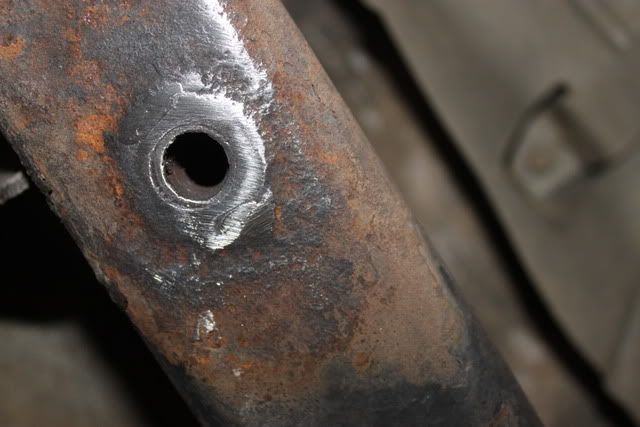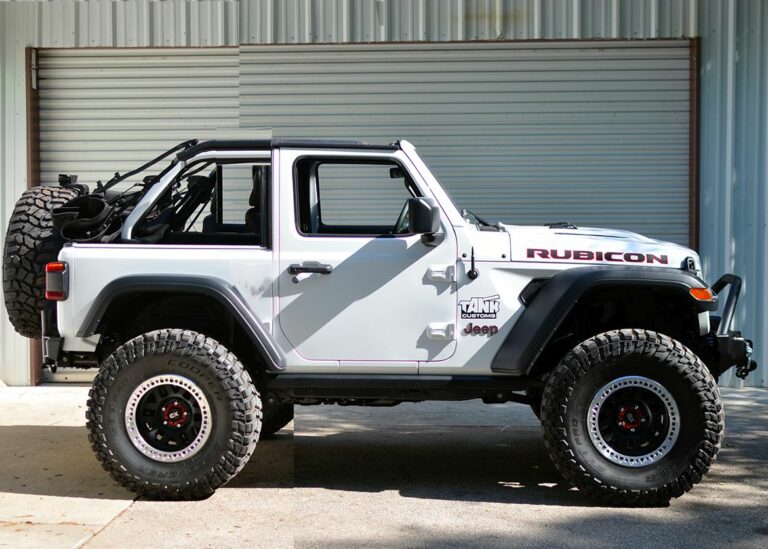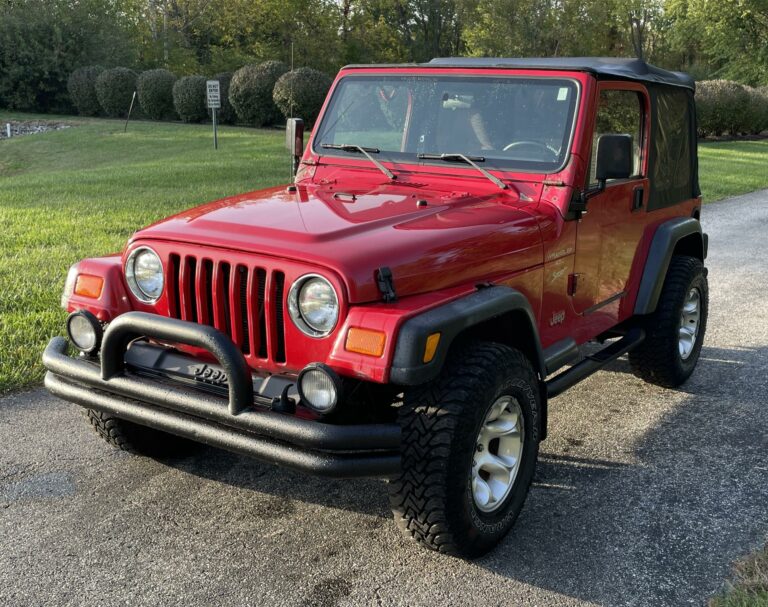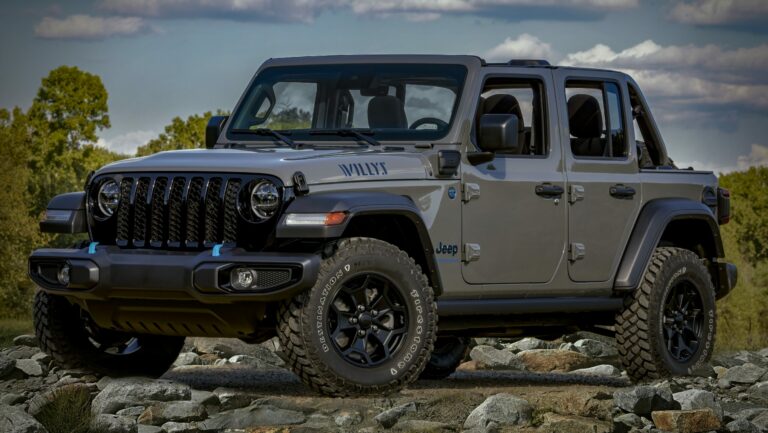Jeep Nutserts For Sale: Your Ultimate Guide to Threaded Fastening Solutions
Jeep Nutserts For Sale: Your Ultimate Guide to Threaded Fastening Solutions jeeps.truckstrend.com
In the world of Jeeps, where customization, repair, and off-road ruggedness are paramount, having reliable fastening solutions is not just a convenience—it’s a necessity. From mounting light bars to repairing rusted body panels, Jeep owners constantly seek robust and versatile ways to secure components. Enter the humble yet incredibly powerful Nutsert. Often overlooked by the casual observer, nutserts (also known as rivet nuts or blind rivet nuts) are unsung heroes that provide a strong, threaded anchor point in thin materials where traditional welding or tapping isn’t feasible or desired. This comprehensive guide, "Jeep Nutserts For Sale," aims to demystify these essential fasteners, exploring their utility, types, installation, and where to find the best options for your beloved Jeep.
Whether you’re a seasoned off-roader looking to reinforce your armor, a DIY enthusiast tackling rust repair, or simply adding a new accessory, understanding nutserts is crucial. They offer a clean, professional, and durable alternative to sheet metal screws or complex welding jobs, making them an indispensable part of any Jeep owner’s toolkit. Let’s dive deep into the world of Jeep nutserts and discover why they are a must-have for maintaining and modifying your vehicle.
Jeep Nutserts For Sale: Your Ultimate Guide to Threaded Fastening Solutions
What Exactly Are Jeep Nutserts? The Foundation of a Strong Connection
At their core, a nutsert is a tubular rivet that is internally threaded. Think of it as a rivet that has a nut built into it. Designed to be installed from one side of a workpiece (hence "blind rivet nut"), nutserts create a robust, permanent thread in materials that are too thin to be tapped or where access to the backside is limited or impossible. When installed, a nutsert tool pulls the threaded portion of the nutsert, causing its body to collapse and form a bulge on the blind side of the material. This bulge creates a secure, load-bearing thread that can then accept a bolt or screw.
For Jeep applications, this means you can add a secure mounting point to a fender, a door panel, a frame rail, or any sheet metal component without the need for welding a nut, which can be messy, difficult for DIYers, and potentially damage paint or coatings. They are available in various materials, sizes, and head styles, each suited for different applications and environmental conditions. Understanding these variations is key to selecting the right nutsert for your specific Jeep project.
Why Do Jeeps Need Nutserts? Common Applications & Benefits
The versatility of nutserts makes them invaluable for a wide array of Jeep-related tasks. Their ability to provide a strong, clean threaded insert in thin sheet metal solves numerous common problems faced by Jeep owners.
Common Applications for Jeep Nutserts:

- Corrosion Repair: One of the most frequent uses for nutserts on older Jeeps, particularly the TJ, YJ, and even some JK models, is repairing rusted body mounts, fender flare mounting points, or interior panel attachment points. When original weld nuts rust away or break free from the sheet metal, nutserts offer a perfect solution to create new, strong attachment points without extensive bodywork.
- Accessory Mounting: This is where nutserts truly shine for the customization-focused Jeep owner.
- Light Bars & Auxiliary Lighting: Mounts directly to the cowl, A-pillar, or roof.
- Fender Flares & Inner Fenders: Securely attach aftermarket or replacement flares.
- Rock Sliders & Armor: While primary mounting usually involves larger bolts, nutserts can be used for secondary attachment points or cosmetic panels.
- Interior Organizers & Storage: Adding mounting points for MOLLE panels, fire extinguishers, or custom storage solutions within the cabin.
- Roof Racks & Baskets: Providing secure anchor points to the hardtop or body.
- License Plate Relocation: Cleanly mounting plates after bumper upgrades.
- Custom Fabrication & Prototyping: For those building custom components, nutserts allow for easy, repeatable assembly and disassembly, making them ideal for mock-ups or small production runs.
- Removable Components: If you frequently remove components like doors, tops, or specific body panels, nutserts can provide a more robust and longer-lasting thread than self-tapping screws, which can strip over time.
Benefits of Using Nutserts on Your Jeep:
- Strong & Secure: When properly installed, nutserts offer excellent pull-out strength and resistance to torque, creating a far more reliable connection than sheet metal screws.
- DIY-Friendly: With the right tool, nutsert installation is straightforward and accessible to most DIY mechanics, avoiding the complexity and cost of welding.
- Versatile: They work with a variety of materials, including steel, aluminum, and even some plastics.
- Clean Finish: They provide a neat, flush, or low-profile threaded hole, enhancing the aesthetic of your installation.
- Corrosion Resistance: When using stainless steel or properly coated steel nutserts, you can significantly improve the longevity of your attachment points, especially in exposed areas.
- Blind Installation: Their ability to be installed from one side makes them perfect for enclosed sections or tight spaces.
Types of Jeep Nutserts For Sale: Choosing the Right One
Not all nutserts are created equal, and selecting the correct type for your specific application is crucial for long-term success. When searching for "Jeep Nutserts For Sale," consider the following characteristics:
1. Material:
- Steel Nutserts: The most common and generally the strongest. Often zinc-plated for corrosion resistance. Ideal for high-strength applications but can rust if the coating is compromised or in very harsh environments.
- Aluminum Nutserts: Lighter and naturally corrosion-resistant. Easier to install than steel but not as strong. Good for less critical applications or where weight is a concern.
- Stainless Steel Nutserts (304 or 316): Offer superior corrosion resistance, making them ideal for exterior or exposed applications (e.g., fender flares, rock sliders). They are strong but harder to install due to their inherent hardness, often requiring a more robust installation tool.
2. Head Style:
- Flat Head (Large Flange): Provides the largest bearing surface, distributing load over a wider area. Often sits slightly proud of the material surface.
- Small Flange Head: Offers a lower profile than a flat head while still providing good bearing.
- Countersunk Head: Designed to sit flush or slightly below the surface when used in a countersunk hole, providing the cleanest finish. Requires the receiving material to be countersunk.
3. Body Style:
- Round Body: The most common. Relies on the clamping force and the "bulge" to prevent rotation.
- Hexagonal Body: Designed to fit into a hexagonal hole, providing superior anti-rotation capabilities, especially useful in high-torque applications.
- Splined/Ribbed Body: Features splines or ribs along the shaft that dig into the material, enhancing grip and preventing rotation.
4. Open vs. Closed End:
- Open End: Standard nutsert, allowing a bolt to pass completely through.
- Closed End: Features a sealed end, providing a watertight and airtight seal for the installed bolt, preventing moisture or debris from entering the material. Excellent for exterior applications or areas prone to water ingress.
5. Thread Size & Grip Range:
- Thread Size: Common sizes for Jeep applications include metric (M6, M8, M10) and imperial (1/4-20, 5/16-18, 3/8-16). Always match the nutsert thread size to the bolt you intend to use.
- Grip Range: This is CRITICAL. The grip range specifies the thickness of the material the nutsert is designed to effectively clamp. Always measure your material thickness and select a nutsert that falls within its specified grip range. Too thin or too thick, and the nutsert won’t properly collapse or hold securely.
The Installation Process: A DIY Guide for Jeep Owners
Installing nutserts is a straightforward process, but precision and the right tools are essential for a successful, durable connection.
Tools Required:
- Nutsert Installation Tool: This is the most crucial item.
- Manual Hand Tool: Affordable, good for occasional use. Requires significant hand strength for larger nutserts (M8/5/16" and up).
- Lever-Type Hand Tool: Provides more leverage, making larger nutserts easier.
- Ratcheting Hand Tool: Reduces the effort per squeeze.
- Pneumatic/Hydraulic Tool: Fastest and easiest for high-volume or very large nutsert installations, but expensive.
- Electric/Battery-Powered Tool: Offers convenience similar to pneumatic tools without the air compressor.
- Drill & Correct Size Drill Bits: The drill bit size for the pilot hole is specific to each nutsert. Consult the nutsert manufacturer’s specifications. This is critical for proper installation.
- Marker/Punch: For marking the drilling location.
- Deburring Tool/File: To clean burrs from the drilled hole.
- Safety Glasses & Gloves: Always protect your eyes and hands.
Step-by-Step Installation:
- Mark the Location: Precisely mark where you want to install the nutsert. Use a center punch to prevent the drill bit from wandering.
- Drill the Pilot Hole: Using the recommended drill bit size for your specific nutsert, carefully drill the hole. Accuracy here is paramount. An oversized hole will cause the nutsert to spin; an undersized hole will prevent it from entering.
- Clean the Hole: Use a deburring tool, file, or sandpaper to remove any sharp edges or burrs from the drilled hole. This ensures the nutsert sits flush and the material doesn’t interfere with its collapse.
- Prepare the Nutsert Tool: Thread the nutsert onto the mandrel of your installation tool. Ensure it’s fully seated.
- Insert the Nutsert: Place the nutsert (with the tool attached) into the drilled hole. Ensure the head of the nutsert is flush against the material.
- Operate the Tool:
- Manual Tool: Squeeze the handles firmly and steadily until you feel the nutsert collapse and set. You’ll feel a distinct "pop" or resistance.
- Pneumatic/Electric Tool: Simply press the trigger.
- Remove the Tool: Unscrew the mandrel from the now-installed nutsert.
- Check for Secure Fit: Give the installed nutsert a gentle tug or try to rotate it. It should be firmly seated and not spin. If it spins, it was likely an improper installation (wrong drill size, insufficient compression).
Tips for Success:
- Test on Scrap: Always perform a test installation on a piece of scrap metal of the same thickness as your Jeep’s material. This helps you get a feel for the tool and verify the correct drill bit size and compression.
- Lubricate (Steel Nutserts): For steel nutserts, especially larger ones, applying a small amount of thread lubricant (like anti-seize or even a drop of oil) to the mandrel threads of your tool can make the installation smoother and prevent the nutsert from seizing on the mandrel.
- Don’t Over-Tighten: With manual tools, stop when you feel the nutsert set. Over-tightening can deform the nutsert or the surrounding material.
- Consider Anti-Corrosion: If using steel nutserts in an exposed area, consider applying paint, rust-proofing spray, or a waterproof sealant around the installed nutsert to prevent future corrosion.
Common Pitfalls & Troubleshooting:
- Nutsert Spinning: Most common issue. Usually due to an oversized drill hole. Double-check your drill bit size. Also, insufficient compression can lead to spinning.
- Nutsert Not Collapsing Fully: Often due to an undersized drill hole or insufficient force from the tool.
- Nutsert Stripping on Mandrel: Can happen if the mandrel is worn, dirty, or if the nutsert is seizing during installation (lubricate!).
Where to Find Jeep Nutserts For Sale: Top Sources
When you’re ready to buy, you’ll find "Jeep Nutserts For Sale" in various places, from specialized automotive retailers to general hardware stores.
- Online Automotive Retailers:
- Quadratec, ExtremeTerrain, Morris 4×4 Center: These Jeep-specific sites often carry nutsert kits tailored for common Jeep applications (e.g., fender flare repair kits).
- Summit Racing, JEGS: Broader automotive performance and parts retailers with a good selection of fasteners.
- Amazon, eBay: Offer a vast selection from various brands and sellers, often at competitive prices. Look for "rivet nut assortment kits" or "nutsert tool kits."
- Local Hardware Stores & Home Improvement Centers (e.g., Lowe’s, Home Depot): You might find basic nutsert kits and tools, but the selection of sizes, materials, and specialized types might be limited.
- Auto Parts Stores (e.g., AutoZone, O’Reilly Auto Parts, Advance Auto Parts): Similar to hardware stores, they may carry basic kits for general automotive repair.
- Specialized Fastener Suppliers: For bulk purchases or very specific nutsert types, industrial fastener suppliers (online or local) will have the widest selection.
- Jeep Forums & Marketplaces: Sometimes, you can find bulk deals or specialized kits being sold by other enthusiasts.
When purchasing, consider buying a kit that includes an assortment of common sizes and a quality installation tool if you don’t already own one. Read reviews to ensure the quality of both the nutserts and the tool.
Pricing Guide and Value Proposition
The cost of Jeep nutserts and their associated tools can vary significantly based on material, size, quantity, and whether an installation tool is included.
Factors Affecting Price:
- Nutsert Material: Aluminum is generally the cheapest, followed by zinc-plated steel, with stainless steel being the most expensive due to its material cost and manufacturing complexity.
- Quantity: Buying in bulk (e.g., packs of 50, 100, or 500) significantly reduces the per-unit cost compared to small packs or individual nutserts.
- Kit vs. Individual: Kits that include an assortment of nutserts and an installation tool will be more expensive upfront but offer better value than buying components separately, especially for first-time users.
- Tool Quality: Manual hand tools are the most affordable, while heavy-duty lever-type, ratcheting, pneumatic, or electric tools will be substantially more expensive.
- Brand Reputation: Well-known brands in the fastener industry might charge a premium for quality assurance.
Sample Pricing Table for Jeep Nutserts For Sale:
(Note: Prices are approximate and can vary widely based on supplier, brand, and market fluctuations.)
| Item Description | Quantity | Material | Thread Size | Estimated Price Range (USD) | Notes |
|---|---|---|---|---|---|
| Basic Nutsert Assortment Kit (No Tool) | 50-150 pcs | Steel (Zinc-Plated) | M4, M5, M6, M8, M10, 1/4-20 | $15 – $30 | Good for those with a tool; variety of common sizes. |
| Standard Nutsert Kit with Hand Tool | 50-100 pcs | Steel (Zinc-Plated) | M6, M8, 1/4-20 | $30 – $60 | Entry-level tool included; suitable for light to moderate use. |
| Heavy-Duty Nutsert Kit with Lever Tool | 100-200 pcs | Steel, Aluminum | M6, M8, M10, 1/4-20, 5/16-18 | $70 – $120 | More robust tool; better for frequent use or larger nutserts. |
| Stainless Steel Nutsert Pack | 25 pcs | Stainless Steel | M6, M8, 1/4-20 | $20 – $40 | Higher corrosion resistance; often sold in smaller packs due to cost. |
| Bulk Steel Nutserts | 100 pcs | Steel (Zinc-Plated) | M8 or 5/16-18 | $15 – $30 | For specific, high-volume applications like fender flare replacements. |
| Closed-End Nutsert Pack | 25 pcs | Steel/Stainless | M6, M8, 1/4-20 | $25 – $45 | Provides water/dust seal; often specific to application needs. |
| Pneumatic/Electric Nutsert Tool (Tool Only) | 1 | N/A | N/A | $150 – $500+ | Professional grade, for heavy-duty or continuous use. Nutserts sold separately. |
Value Proposition:
Investing in quality Jeep nutserts and a proper installation tool offers significant value. It empowers you to perform professional-grade repairs and modifications yourself, saving potentially hundreds or thousands of dollars in labor costs from a shop. Beyond the financial savings, nutserts provide a superior, more durable, and cleaner solution compared to many makeshift alternatives, ensuring your Jeep modifications stand the test of time and the rigors of off-road adventures.
Practical Advice and Actionable Insights
- Don’t Skimp on the Tool: While cheap nutsert tools exist, a quality tool (especially a lever-action or ratcheting one for steel nutserts) will save you frustration, prevent failed installations, and last for many projects.
- Match Materials: For exposed areas or dissimilar metals, choose stainless steel nutserts to prevent galvanic corrosion. For general interior use, zinc-plated steel is usually sufficient.
- Grip Range is Key: Always verify the grip range of the nutsert against the thickness of the material you’re installing it into. This is the most common reason for failed installations.
- Practice Makes Perfect: If you’re new to nutserts, buy a few extra and practice on scrap metal. Get a feel for the tool and the proper installation technique before working on your Jeep.
- Consider Bulk: If you anticipate multiple projects or ongoing needs, buying a larger quantity of commonly used nutsert sizes will be more cost-effective in the long run.
Frequently Asked Questions (FAQ) about Jeep Nutserts
Q1: What’s the difference between a "nutsert" and a "rivet nut"?
A1: There is no functional difference. "Nutsert" is a brand name (from the company Avdel, now part of Stanley Engineered Fastening) that became a generic term, much like "Kleenex" for facial tissue. "Rivet nut" is the more generic and technically accurate term.
Q2: Can I install a nutsert without a special tool?
A2: While it’s technically possible to improvise with a bolt, nut, and washers, it is highly discouraged. Improvised methods rarely provide consistent, correct compression, often leading to spinning nutserts, damaged threads, or an insecure attachment. A dedicated nutsert tool is a worthwhile investment.
Q3: How do I know what size drill bit to use for a specific nutsert?
A3: The drill bit size is critical and specific to each nutsert’s outside diameter. Always consult the nutsert manufacturer’s specifications or the packaging of your nutsert kit. There is no universal drill size.
Q4: How strong are nutserts?
A4: When properly installed, nutserts provide a very strong and reliable threaded connection. Their strength depends on the nutsert’s material (steel is strongest), size, and the thickness and material of the host panel. They are generally much stronger than self-tapping screws for the same application.
Q5: Can nutserts be removed?
A5: Yes, but typically by drilling them out. This process is destructive to the nutsert itself and may require careful drilling to avoid enlarging the original hole too much. Once drilled out, a new nutsert of the same or slightly larger size can usually be installed.
Q6: Do nutserts rust?
A6: Steel nutserts, especially if their zinc plating is scratched or in highly corrosive environments, can rust. Stainless steel nutserts offer excellent corrosion resistance and are recommended for exposed or wet applications. Closed-end nutserts also provide an extra layer of protection against moisture.
Q7: Can I use nutserts on curved surfaces?
A7: Nutserts are primarily designed for flat surfaces. While they can tolerate a slight curve, installing them on significantly curved surfaces can compromise their integrity and lead to a less secure fit.
Concluding Summary: Empowering Your Jeep Journey
Jeep nutserts are more than just fasteners; they are enablers of customization, repair, and enhanced functionality for any Jeep owner. Their ability to provide strong, reliable, and clean threaded anchor points in thin materials opens up a world of possibilities, from meticulously repairing rust damage to effortlessly mounting the latest off-road accessories. By understanding the different types of nutserts, mastering their installation, and knowing where to find "Jeep Nutserts For Sale," you empower yourself to tackle projects with confidence, achieve professional-grade results, and ultimately, get more enjoyment and utility out of your Jeep. Embrace the versatility of nutserts, and transform your Jeep into the ultimate expression of your off-road passion.






